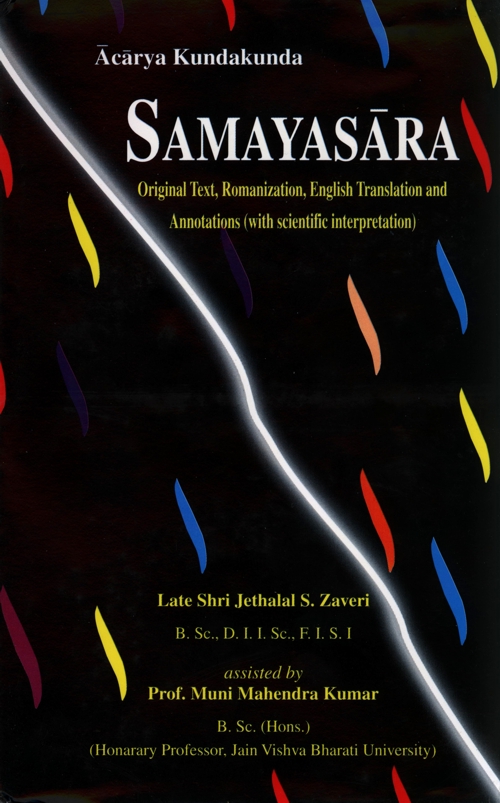
jo samayapāhuḍamiṇaṃ paḍhidūṇa ya atthataccado ṇāduṃ.
atthe ṭhāhidi cedā so hohidi uttamaṃ sokkhaṃ..108
(Jo cedā iṇaṃ samayapāhuḍaṃ paḍhidūṇa) [Only] that soul, who having studied this book, Samaya Pāhuḍa, (ya atthataccado ṇāduṃ) and having grasped and comprehended its real meaning and its truth [would firmly hold the eternal truth] (atthe ṭhāhidi) realize and stick to the its essence in the form of pure self (so uttamaṃ sokkhaṃ hohidi) would undoubtedly attain the [pure self in the form of] Supreme Bliss.
Annotations:
We have seen that Ācārya Kundakunda has dealt with the ultimate conscious reality called Samayasāra, which is synonymous with the pure and perfect state of the soul or the pure conscious substance in its most fundamental state, in this book. The author had, in the beginning of the first chapter, promised that he would reveal the nature of Samayasāra i.e., the metempirical self. He had begged the readers that they should critically examine and test what he has written and accept it only if it satisfies the condition of truth and reject it if it doesn't. Now in the last verse of the book, he indicates the benefits to those who are satisfied with the validity of his promise. He recommends that those who have been able to comprehend the real meaning of the book, should secure and treasure the truth to attain supreme bliss.
If we look back for a moment, we shall find that, throughout the book, the author has fully exploited the traditional distinction between the empirical (practical) or vyavahārika and transcendental (absoulute) or pārmārthika aspects, according to the peculiar doctrine of Naya. Although he makes his preference for the latter aspect as obvious as possible, he does not hesitate to accept the adoption of the former and even justifies it. He concedes that all aspirants can never be at the same level of spiritual advancement and are, therefore, not capable of comprehending the ultimate reality in the beginning. Hence, it is necessary to reach the ultimate truths by adopting the vyāvahārika aspect. Consequently, he examines every problem from both aspects.
Again, throughout the book, the author has maintained that the soul in the worldly state is identical with the ultimate reality—Samayasāra. If the pure self is the shining sun with all its brilliance and glory, the worldly self is the sun hidden by a dense layer of clouds which hides the sunshine but is incapable of doing any harm to the sun itself. To disperse the obfuscating clouds it is essential that the worldly self who has forgotten its own nature must first identify itself with the Ultimate Reality. And if we have to state the purpose of this book, in a few words, we can say that it emphasizes the need for identifying the worldly self with the pure self.
The pure and perfect self characterized by all knowledge is the subject matter of this book. The reader who studies the book and comprehends its true and full meaning is sure to identify himself with the ultimate self and thus initiate the process of self-realization which would positively culminate into final liberation.
(Iti dahamo savvvisuddhaṇāṇādhiyāro samamatto)
[Here ends the tenth chapter on the topic of 'Wholly Pure Knowledge'.]
(hi siri kundakundāiriya-panῑdaṃ Samayapāhudaṃ)
[Here ends the Samayapāhuḍa composed by Śrῑ Kundakundācārya.]
 Jethalal S. Zaveri
Jethalal S. Zaveri
 Prof. Muni Mahendra Kumar
Prof. Muni Mahendra Kumar

